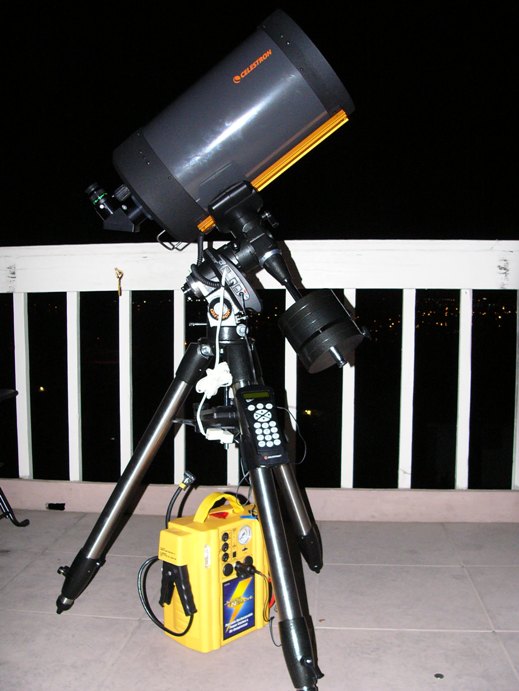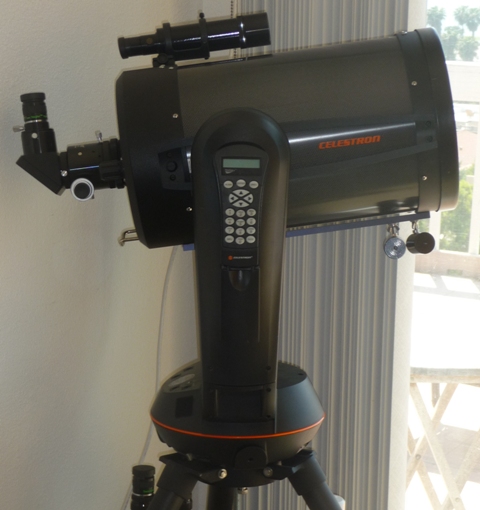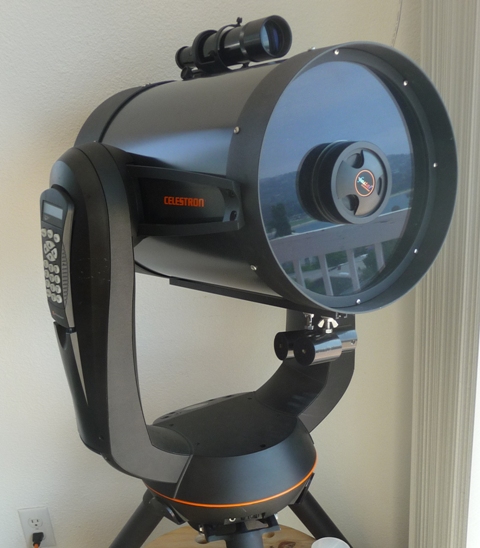|
Catadioptric Telescopes
Catadioptric Telescopes use both lenses and mirrors to produce an image.
The two most popular versions are the Schmidt-Cassegrain telescope (SCT) and
Maksutov-Cassegrain scope (Mak).
A front-mounted corrector plate (the lens) and a primary and secondary mirror
can put a large diameter mirror in a short and portable design.

SCT's and Maks tend to have long focal lengths and narrow fields of view.
The SCT has a thin corrector that is prone to dewing up. In wet areas dew
shields and dew prevention systems (heaters) may be required.
| Examples of a Schmidt-Cassegrain telescope (SCT).
The shot to the right is an 11-inch diameter SCT on a GO TO equatorial
mount.
The shots below are of the same scope (essentially) in an Alt-Azimuth
fork mount.
Note the thin glass/plastic corrector at the front of the optical
tube assembly. These are susceptible to dewing over in wetter
climates. Dew shields and dew heaters allow observing in dewy
conditions. |
 |
 |
 |
|